Terror, resistance and trauma in Papua (Indonesia) - PapuaWeb
Terror, resistance and trauma in Papua (Indonesia) - PapuaWeb
Terror, resistance and trauma in Papua (Indonesia) - PapuaWeb
- No tags were found...
You also want an ePaper? Increase the reach of your titles
YUMPU automatically turns print PDFs into web optimized ePapers that Google loves.
<strong>Terror</strong>, Resistance <strong>and</strong> Trauma <strong>in</strong> <strong>Papua</strong> (<strong>Indonesia</strong>)<br />
By Budi Hernawan OFM ∗<br />
<strong>Papua</strong> recently attracted the attention of the <strong>in</strong>ternational community, <strong>and</strong> <strong>in</strong> particular of Australia,<br />
when Australian citizen Drew Grant was killed <strong>in</strong> a shoot<strong>in</strong>g <strong>in</strong>cident <strong>in</strong> the early morn<strong>in</strong>g of 11<br />
July 2009 <strong>in</strong> the Freeport M<strong>in</strong><strong>in</strong>g area <strong>in</strong> Tembagapura, <strong>Papua</strong> (The Jakarta Globe, 13 July 2009).<br />
This kill<strong>in</strong>g ignited a series of violent acts <strong>in</strong> the world largest gold <strong>and</strong> copper m<strong>in</strong>e site. Police are<br />
yet to provide an explanation of the <strong>in</strong>cident. The shoot<strong>in</strong>g immediately sparked speculation <strong>in</strong> the<br />
public <strong>and</strong> <strong>in</strong>ternational media forc<strong>in</strong>g a highly-ranked representative of the <strong>Indonesia</strong>n<br />
Government to provide a public statement. On 16 July the M<strong>in</strong>ister of Defence, Yuwono<br />
Sudarsono, claimed that a ‘rogue element’ <strong>in</strong> the military might have been <strong>in</strong>volved <strong>in</strong> the shoot<strong>in</strong>g<br />
(ABC News, 16 July 2009).<br />
Despite the lack of strong evidence, the police arrested <strong>and</strong> deta<strong>in</strong>ed 9 civilians on 20 July 2009 <strong>and</strong><br />
charged them with murder, even though the unidentified gunmen cont<strong>in</strong>ued to engage <strong>in</strong> acts of<br />
shoot<strong>in</strong>g (The Jakarta Post, 12/8/09). This story sounds familiar for many <strong>Papua</strong>ns, recall<strong>in</strong>g<br />
memories of a similar <strong>in</strong>cident <strong>in</strong> August 2002, when one <strong>Indonesia</strong>n <strong>and</strong> two American teachers<br />
were shot dead <strong>in</strong> an ambush at the Freeport M<strong>in</strong><strong>in</strong>g site.<br />
Such an <strong>in</strong>cident might represent the spectre of terror that marks the l<strong>and</strong>scape of Freeport m<strong>in</strong><strong>in</strong>g<br />
area (Ballard 2002) <strong>and</strong> has shaped memoria passionis of the <strong>Papua</strong>ns as a whole. As a response to<br />
the repeated terror, the <strong>Papua</strong>ns expressed their opposition to be cont<strong>in</strong>uously blamed as a<br />
scapegoat. In a rarely issued public statement dated 15 July 2009, Kelly Kwalik, the leader of the<br />
Organisasi Pembebasan Papoea Merdeka (OPM) <strong>in</strong> the Timika area, expressed his strong denial<br />
that he or his group was <strong>in</strong>volved <strong>in</strong> the attack <strong>in</strong> any way (Kwalik 2009). This act illustrates the<br />
<strong>resistance</strong> aspect <strong>in</strong> <strong>Papua</strong> that responds to prolonged oppressive mechanisms that sacrifice<br />
<strong>Papua</strong>ns. Over time, terror <strong>and</strong> <strong>resistance</strong> have become a dialectic that leaves the <strong>Papua</strong>ns<br />
<strong>trauma</strong>tised <strong>and</strong> forms an unbreakable cycle. This current pattern of terror needs to be understood<br />
with<strong>in</strong> <strong>Papua</strong>’s broader historical context <strong>and</strong> the legacy of the region’s early history.<br />
This paper does not <strong>in</strong>tend to provide an <strong>in</strong>-depth exam<strong>in</strong>ation of <strong>Papua</strong>’s history. Rather, it aims to<br />
reflect on the prolonged terror, <strong>resistance</strong> movements <strong>and</strong> <strong>trauma</strong> that have characterised <strong>Papua</strong> to<br />
date. Yet <strong>in</strong> order to do so, we need to trace the historical context, <strong>in</strong>clud<strong>in</strong>g <strong>in</strong> particular the<br />
transfer of this area to <strong>Indonesia</strong>n adm<strong>in</strong>istration on 1 May 1963 by the United Nations Temporary<br />
Executive Authority (UNTEA), under Article XII of the 1962 New York Agreement.<br />
The paper beg<strong>in</strong>s by summaris<strong>in</strong>g the key arguments that scholars suggested underp<strong>in</strong>ned the power<br />
struggle between <strong>Indonesia</strong> <strong>and</strong> the Netherl<strong>and</strong>s. Secondly, it discusses the establishment of control<br />
mechanisms that have resulted <strong>in</strong> a dialectic of terror <strong>and</strong> <strong>resistance</strong>. Thirdly, it briefly explores<br />
<strong>trauma</strong> as an impact of the dialectic of terror <strong>and</strong> <strong>resistance</strong>.<br />
I. The Power Struggle of the 1960s<br />
Many publications have been written, from various perspectives, on the power struggle between the<br />
Netherl<strong>and</strong>s <strong>and</strong> <strong>Indonesia</strong> over control <strong>and</strong> access to West New Gu<strong>in</strong>ea (WNG). All authors agree<br />
that the Cold War played a decisive role <strong>in</strong> direct<strong>in</strong>g the political negotiations between the<br />
∗ PhD C<strong>and</strong>idate at the Regulatory Institutions Network, Australian National University. The author is a Franciscan friar<br />
who previously worked for ten years at the Office for Justice <strong>and</strong> Peace of the Catholic Church <strong>in</strong> Jayapura, West<br />
<strong>Papua</strong>, <strong>Indonesia</strong>. An earlier version of this paper was presented on 21 August 2009 at a Public Forum held at the<br />
University of Sydney <strong>and</strong> organised by <strong>Indonesia</strong>n Solidarity <strong>and</strong> the Centre for Peace <strong>and</strong> Conflict Studies of the<br />
University of Sydney.<br />
1



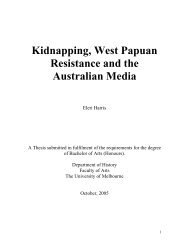
![[1958: Gahuku]. - PapuaWeb](https://img.yumpu.com/25139694/1/190x245/1958-gahuku-papuaweb.jpg?quality=85)
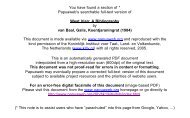


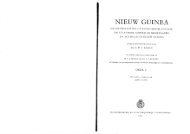
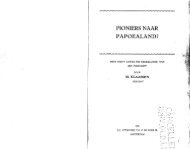
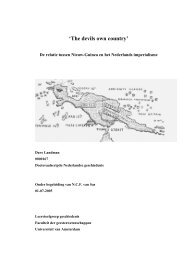
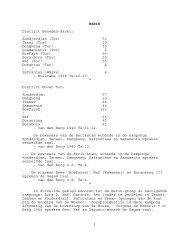
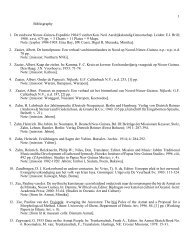

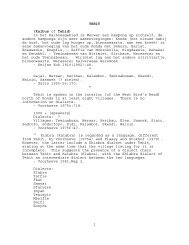
![1 EKARI (EKAGI) [Map] (cf S&C) Akaromani Apoejai ... - PapuaWeb](https://img.yumpu.com/19731685/1/190x245/1-ekari-ekagi-map-cf-sc-akaromani-apoejai-papuaweb.jpg?quality=85)
![WUTUNG [passim in text] Wutung (Oenaki, Oinåke) - Friederici ...](https://img.yumpu.com/15960045/1/190x245/wutung-passim-in-text-wutung-oenaki-oinake-friederici-.jpg?quality=85)